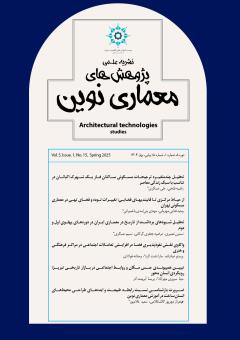تبیین همپیوندی حس مکان و روابط اجتماعی در بازار تاریخی تبریز؛ رویکردی انسان محور
محورهای موضوعی :مینا سروری مهرآباد 1 , پریسا آبرومند آذر 2
1 - استادیار، گروه معماری، دانشکده علوم وهنر، دانشگاه آزاد اسلامی، مراغه، ایران.
2 - استادیار گروه معماری، دانشکدۀ علوم و هنر، واحد بناب، دانشگاه آزاد اسلامی، بناب، ایران.
کلید واژه: حس مکان, روابط اجتماعی, تعاملات انسانی, بازار تاریخی تبریز, انسانمحور.,
چکیده مقاله :
حس مکان و روابط اجتماعی از عناصر کلیدی در فهم تعاملات انسانی و کارکردهای فضاهای عمومی بهشمار میروند. بازار تاریخی تبریز، بهعنوان یکیای نمادهای برجستۀ معماری و فرهنگی ایران، بستری است که در آن حس مکان و ارتباطات اجتماعی نقشی بیبدیل ایفاء میکنند. هدف این پژوهش، واکاوی همپیوندی حس مکان و روابط اجتماعی در این فضای تاریخی با رویکردی انسانمحور است. این مطالعه بهروش توصیفی-تحلیلی و با بهرهگیری از ابزارهای کمی و کیفی انجام شده است. در بخش کمی، جامعۀ آماری پژوهش شامل کسبه و مراجعان بازار تاریخی تبریز است که با استفاده از روش نمونهگیری تصادفی و توزیع پرسشنامه در میان 400 نفر بر اساس «فرمول کوکران»، دادههای موردنیاز گردآوری شد. در بخش کیفی، مصاحبههای نیمهساختاریافته با کارشناسان حوزههای مرتبط انجام گرفت. دادهها با استفاده از نرمافزار آماری «اسپیاساس»، «ضریب همبستگی پیرسون» و تحلیل مسیر در نرمافزار «ایاماواس»، پردازش شدند. نتایج پژوهش نشان میدهد که میان حسمکان و کیفیت روابط اجتماعی در این بازار ارتباطی معنادار و متقابل وجود دارد. فضای کالبدی، عناصر فرهنگی و فعالیتهای روزمره، بهعنوان اجزاء مؤثر بر تقویت حس مکان، نقش مهمی در شکلگیری و تداوم روابط اجتماعی ایفاء میکنند. این پژوهش با تأکید بر رویکرد انسانمحور، راهکارهایی برای تقویت تعاملات اجتماعی و حفظ حس مکان در بازارهای تاریخی ارائه میدهد که میتواند به ارتقای کیفیت زندگی شهری و پایداری فرهنگی در چنین فضاهایی منجر شود.
Sense of place and social relations are key elements in understanding human interactions and the functions of public spaces. The historic Bazaar of Tabriz, as one of the most prominent architectural and cultural symbols of Iran, serves as a setting where sense of place and social interactions play an unparalleled role. This study aims to examine the interconnection between sense of place and social relations in this historical space using a human-centered approach.The research employs a descriptive-analytical method, utilizing both quantitative and qualitative tools. In the quantitative section, the study population consists of shopkeepers and visitors of the historic Bazaar of Tabriz. Data were collected through a random sampling method by distributing questionnaires among 400 individuals, based on Cochran’s formula. In the qualitative section, semi-structured interviews were conducted with experts in relevant fields. The collected data were processed using the SPSS statistical software, Pearson correlation coefficient, and path analysis in AMOS software.The findings indicate a significant and reciprocal relationship between sense of place and the quality of social relations in the bazaar. The physical space, cultural elements, and daily activities, as influential components in strengthening the sense of place, play a crucial role in the formation and continuity of social relationships. Emphasizing a human-centered approach, this study proposes strategies to enhance social interactions and preserve the sense of place in historic bazaars, contributing to the improvement of urban life quality and cultural sustainability in such spaces.
